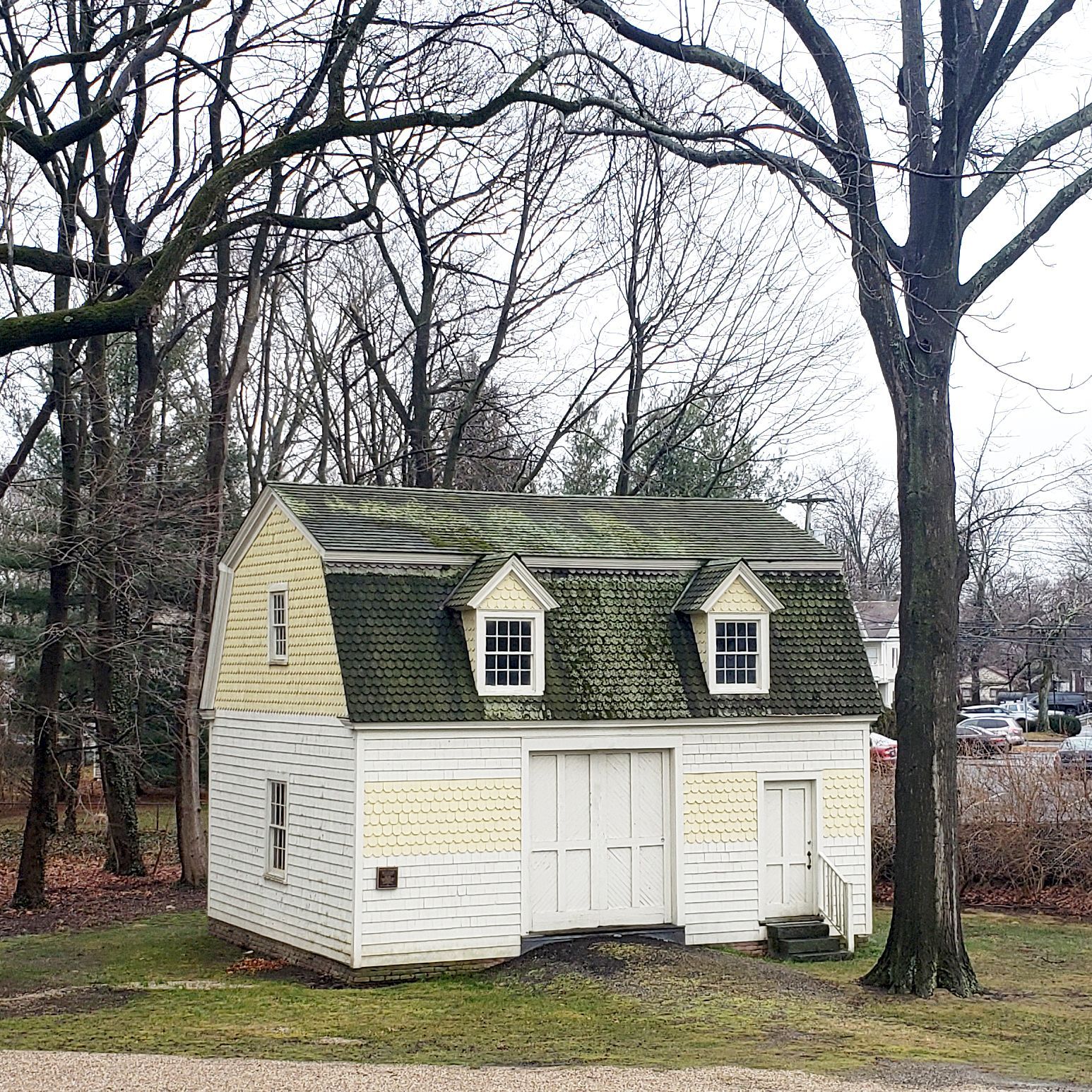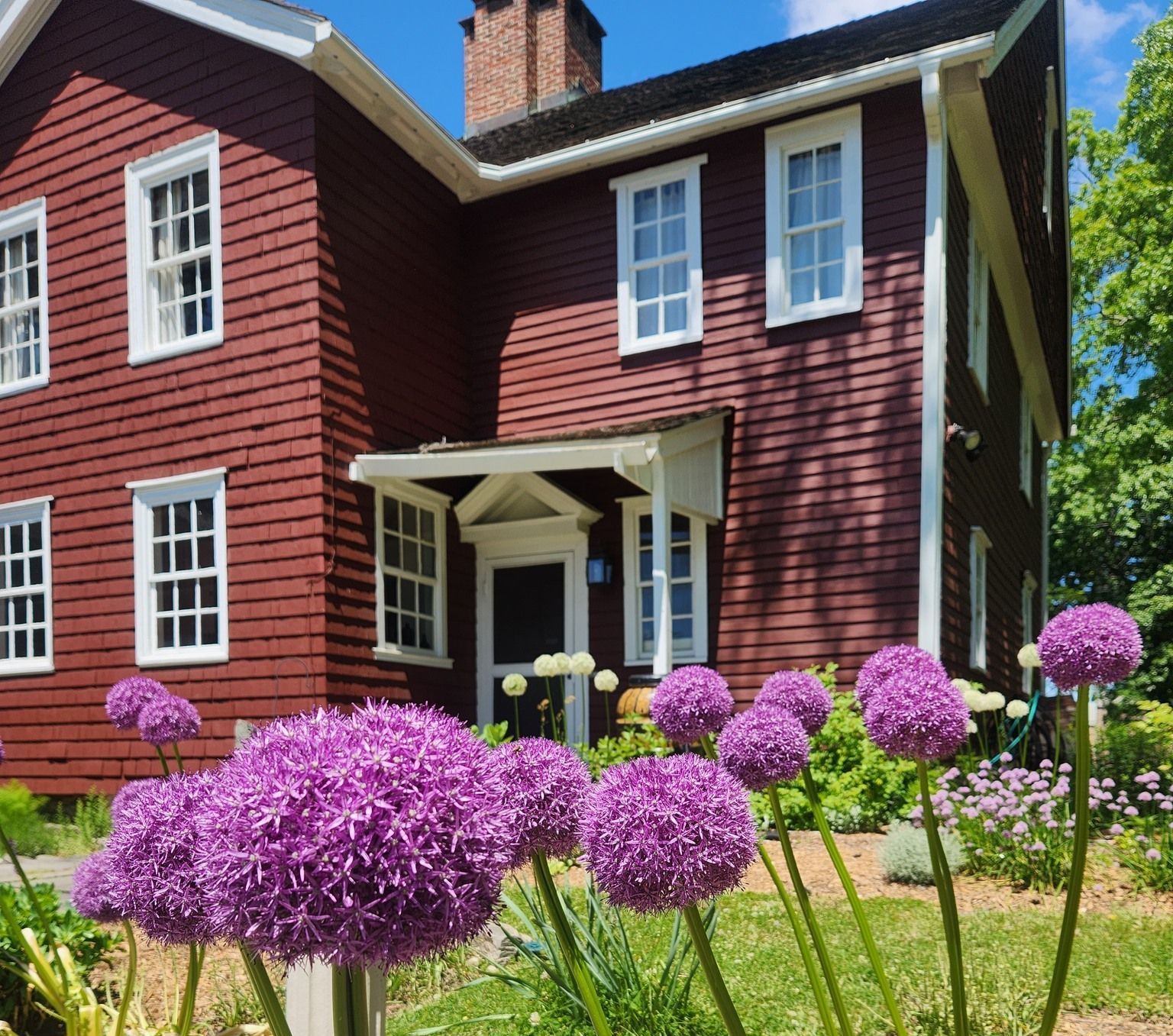Exhibits
Captain David Judson House
The Captain David Judson House, built in 1723, offers an in-depth look at Stratford’s colonial and early American life through its architecture, furnishings, and the stories of those who lived there.
Captain David Judson, a local militia leader, legislator, and respected civic figure, built the home on land first settled by his great-grandfather in 1639. The house remained in the Judson family for generations, ultimately passing to Celia and Cornelia Curtis, sisters and descendants of the original owners. Devoted to preserving Stratford’s history, the Curtis sisters bequeathed the house to the newly formed Stratford Historical Society in 1925.
The house is a two-story Georgian-style structure with a central chimney and six fireplaces, showcasing a transition from the earlier saltbox form. Visitors can view original architectural details such as paneled walls, wide-plank floors, and an intricately designed front doorway featured in architectural texts. The restored interior includes a kitchen with period hearth equipment, bed chambers with 18th- and 19th-century textiles, and a parlor containing furnishings such as a tall clock and an Astor piano once owned by William Samuel Johnson, a framer of the U.S. Constitution.
Collections on display include locally used tools, ceramics, spinning wheels, pewter, clothing, and furniture—many of which were donated by longtime Stratford families. The basement exhibits include fishing and farming implements and a preserved area interpreted as 18th-century slave quarters, offering insight into all aspects of life in early Stratford.
The Captain David Judson House is registered on the National Register of Historic Places.
Catharine B. Mitchell Museum
Adjacent to the Judson House is the modern Catharine Bunnell Mitchell Museum with permanent exhibits of Stratford history and changing gallery exhibits which feature items from the collections of the Stratford Historical Society.
An extensive Genealogy library is located in the Office area of the Museum. Learn more about Research.
On now at the Catharine B. Mitchell Museum
Duty of Care: The Legacy of Indian Boarding Schools and the Question of Repatriation
Open to the public through December 2025,
during regular museum hours
A young Fairfield County teacher's work at an Indian Boarding School on the Standing Rock Reservation in the early twentieth century is awarded with heirlooms purported to have belonged to Hunkpapa Lakota leader Sitting Bull, raising questions, a century later, about the Stratford Historical Society’s responsibility to care for and, when appropriate, repatriate items of cultural significance.
Within the exhibit, three early-1900s perspectives come to light: Edith Hull’s viewpoint as a teacher at an Indian School, the experiences of the Lakota Sioux, and the standpoint of the United States government and its agents.
Current research insights are shared in an interactive section of the exhibit which chronicles a fourth perspective: our twenty-first century observational viewpoint as we endeavor to respond to our shared histories.
In the final section, a collection of baskets likely belonging to the local Paugussett peoples; a book and quotes from current Golden Hill Paugussett Clan Mother Shoran Waupatukuay Piper, remind us that Native Americans are part of our past, our present, and our future.
Through this exhibit, the Stratford Historical Society seeks to spark a community conversation that will ultimately guide our efforts to catalogue, preserve, share, and if desired, return the cultural objects attributed to Sitting Bull, and any others like them, in our Collections.
Beach Family Carriage House
The Beach Family Carriage House: The carriage house, built approximately 1880-1885, was built by the prominent Beach family of 1812 Elm St. The carriage and horse were housed on the ground floor while the upper floor was used for storage of hay and grains.
Before 1909, when electricity came to Stratford, the Beach family owned a gasoline-powered electric generator which benefited several houses in the Elm St. area. The original green glass insulators on the building probably date to the turn of the 20th century. The upper level was used for many years for Halloween parties and other family and neighborhood gatherings.
In late February 2004, the Stratford Historical Society was given the opportunity to acquire and move the Carriage House which was in the way of development of the property at 1812 Elm St. The Society accepted the challenge, saved the building, and celebrated its re-birth in August 2005.

Visit Our Virtual Exhibitions
A virtual museum exhibition is an online experience that allows you to explore museum collections from the comfort of your own space. Through digital technology, we bring our artifacts, artworks, and treasures to you—no matter where you are. These exhibitions are designed to offer an accessible way to engage with Stratford's history, all from your own devise.
In our latest exhibition, Curiosity Cabinet, we present a collection of lesser-known, but equally fascinating, items from our archives.






